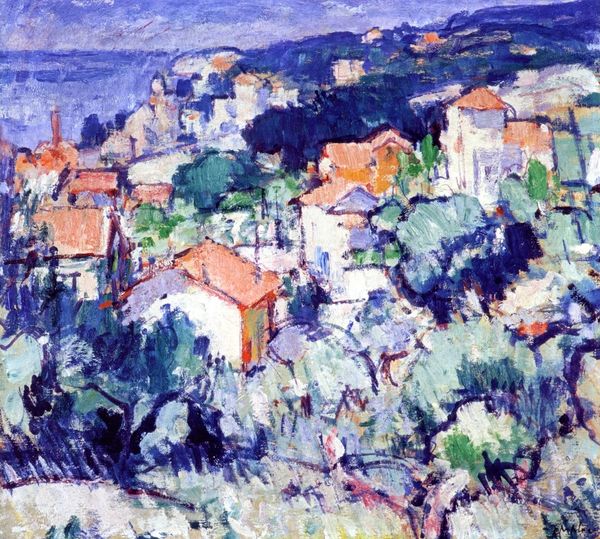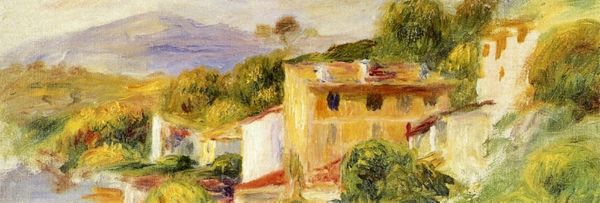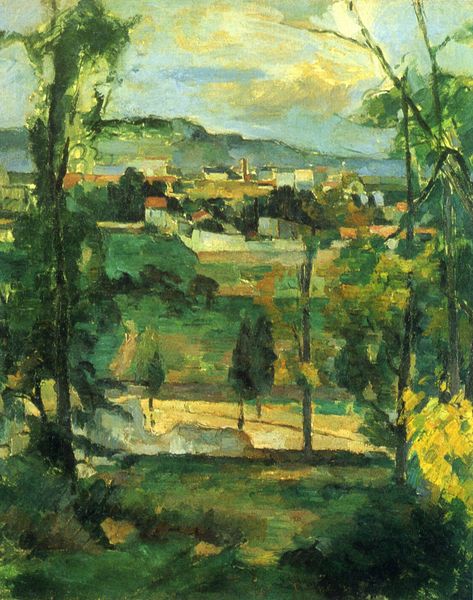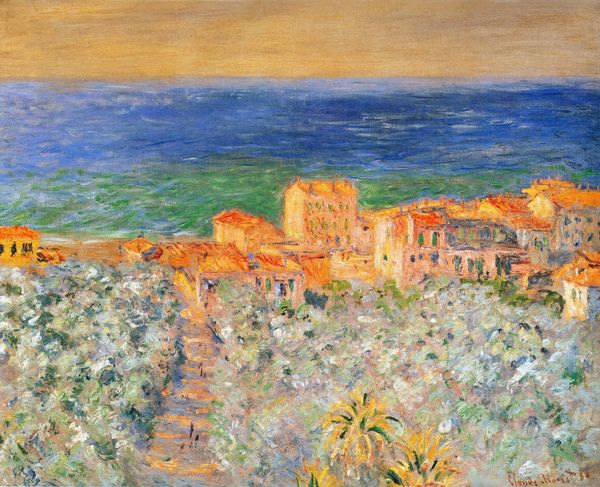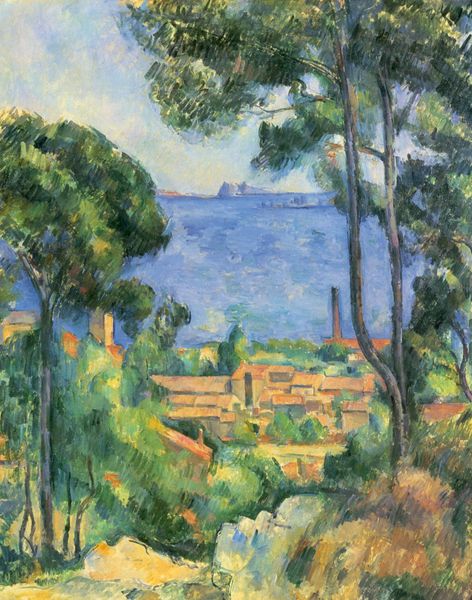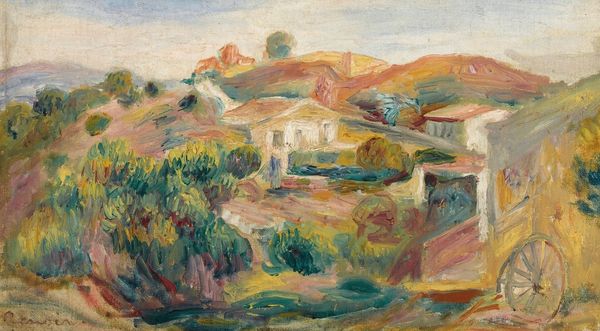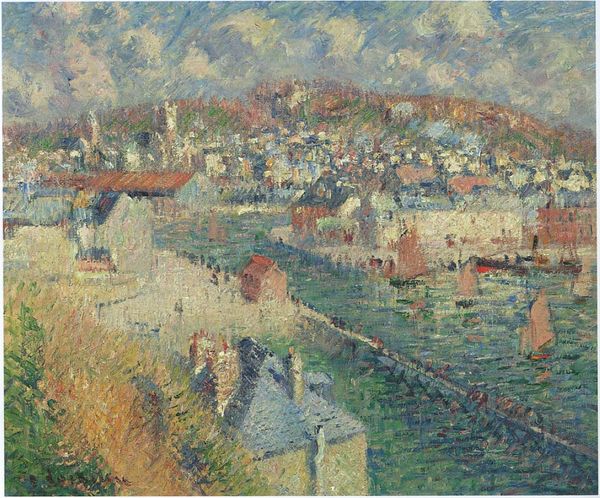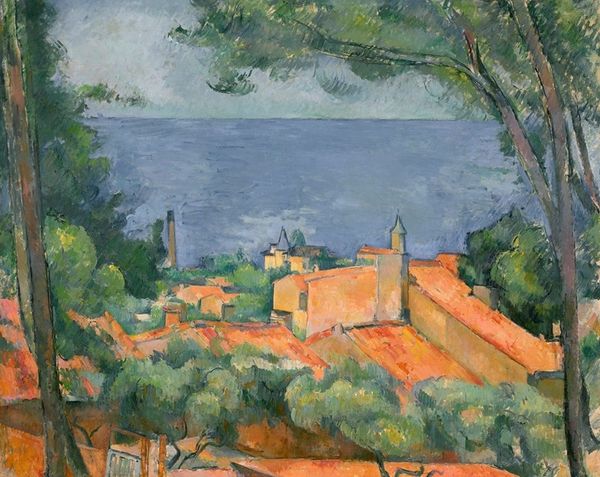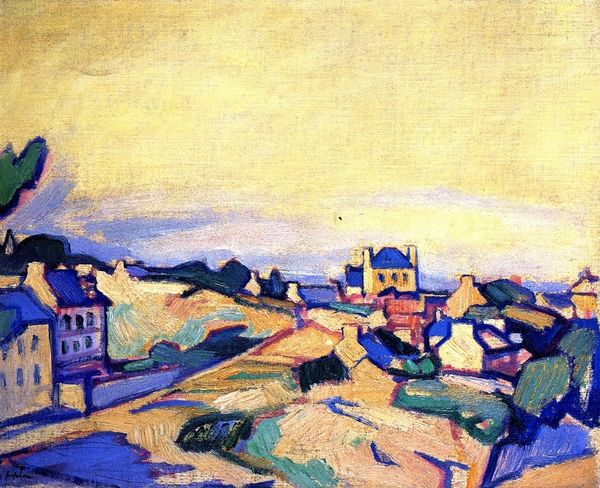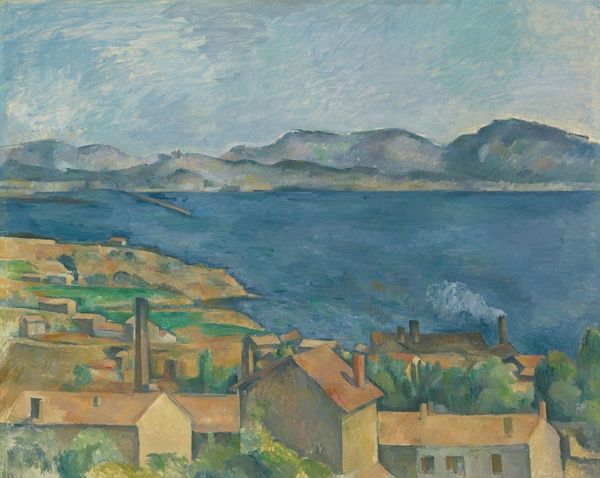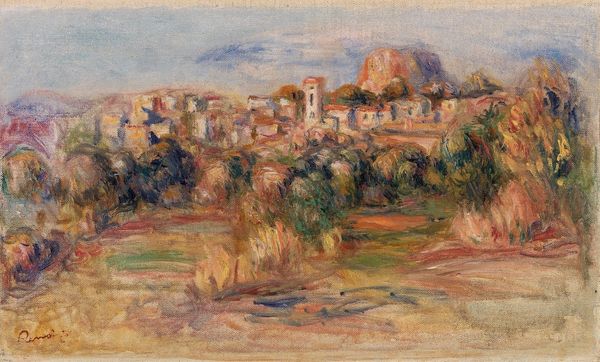
plein-air, oil-paint
#
plein-air
#
oil-paint
#
landscape
#
oil painting
#
cityscape
#
post-impressionism
#
modernism
Dimensions: 60 x 73 cm
Copyright: Public domain
Curator: I am immediately struck by the color palette: the ochres and yellows contrasting with the blues of the water. There's almost a flattening of perspective; it feels like the buildings and landscape are all pressed together. Editor: This is Paul Cézanne’s “View of L'Estaque," painted around 1883. Cézanne was working *en plein air*, which speaks to his dedication to observing and capturing the essence of the landscape, in the tradition of the Impressionists, but in this instance driving it forward to a new visual era. Curator: The sky and the water become a unified band of almost vaporous blues. Then you see these rectilinear shapes, the houses, pushing into that blue expanse. It's as though the solidity of human construction is juxtaposed with nature’s vastness, but contained, dominated by geometry and strong lines, as if in constant visual negotiation with the elements around them. Editor: He's also playing with this flattening that you identified. It is not about direct optical representation, it's about how those volumes inform our experience of the area. He painted numerous views of L’Estaque. He felt that it spoke to his aesthetic interest: cubes, cones, cylinders, natural forms which, translated, come together as a town; here the buildings create layers, with a somewhat chaotic presence, yet with strong appeal. Curator: In his distinctive brushwork, there’s this layering of strokes. It gives the impression that he is searching for, or constructing, visual truth rather than presenting a mirror of reality. The weight of paint shows time in the act of looking, an authentic capturing of a real impression as seen. The palette seems reduced almost like that of the land there itself. The artist truly speaks through that language of ochres and claylike strokes and touches, that are so much a reminder of earth's surface, and matter. Editor: It is like Cézanne reduces forms to their essential components in the process of conveying the energy and power of his feelings toward his surroundings. L’Estaque itself was significant; it's a port town, that became an industrial center by this period. There is even a suggestion here of the complex relationship between people and nature—with the industrial advance impinging upon the serene landscape, but also with human structures as just other elemental volumes set within the terrain. Curator: That gives so much nuance to understanding what is in fact quite an abstract image, but rich and representative of cultural moments and historical importance in art's constant movement, Editor: Absolutely. Cézanne transforms an unassuming scene into a deeply resonant exploration of form, perception, and the interplay between nature and society.
Comments
No comments
Be the first to comment and join the conversation on the ultimate creative platform.
